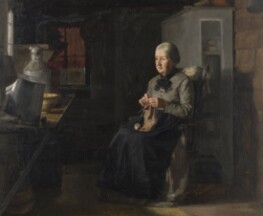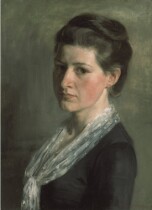Study of a head
In 1913–1914, the work of Josef Čapek was distinguished by simplified form and a greater expressive immediacy. This is especially evident in the specific collection of head images from 1914–1915. In Study of a Head, the elementary, reduced form shifts towards a purely geometric treatment. Here, the strictly geometric forms bring Čapek to the very boundary of abstract art. Only the eye endows the drawing with a specific meaning: the head, composed of triangles, rectangles, circles and ovals or segments of them, has no individualized expression; this is a general form, an archetype, a sign. The summary quality of the image, the rhythmic alternation of empty and full planes, and the sparing colour scheme make it one of Čapek’s most rationally conceived head images. (source: National gallery of Prague)






